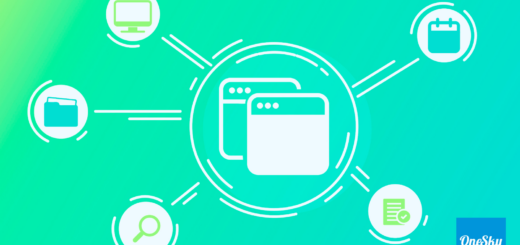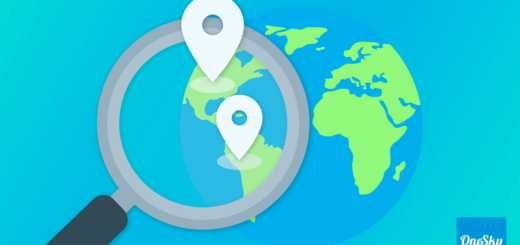Mastering Internationalization in Mobile App Development: A Guide to Going Global
Did you know? An app that fails to localize for a local audience can lose up to 13% of its users immediately. While many take this statistic as a call to prioritize localization in their expansion strategy (which they should!), it actually extends deeper—petitioning for the immediate incorporation of Internationalization concepts as well.
Internationalization (or i18n to some) is critical in today’s market, allowing your app to be easily consumed by new global audience members across different countries. It is foundational, setting the stage for localization (and later translation) that falls in line with a seamless user experience for your growing audience base.
Below, we’re discussing what internationalization and localization are, as well as the differences and similarities of each. This will help you get the most out of each concept as you build your own tailored expansion strategy. We’ll also explore challenges and solutions that come with mobile app internationalization, and best practices and tools you can use as you go.
Read on to learn more about successfully starting your app internationalization process; and how OneSky can help.
Understanding Internationalization and Localization
While i18n and l10n are equally important in preparing your app for the global market, they have a few key differences and similarities to be aware of as you build your strategy.
- Internationalization focuses on the design and app development process, encouraging a system that allows products and apps to be easily adapted for a larger, diverse global audience.
- Localization is a bit more nuanced and focused, personalizing your content for a specific target market in a given region.
Many believe that mobile app internationalization is often considered the first step toward making your app appeal to a specific locale internationally, while localization is the natural next step in your process.
The Business Case for Internationalization
While it can be costly to do up-front, there are many benefits that you can enjoy by prioritizing internationalization in your workflow. Some of these include:
- Reaching a wider audience and potential user base: Competition is fierce in the app market—and pursuing internationalization early instantly elevates you above the competition. By creating a user interface that offers allowances for regional and international differences, you pave the way for a seamless localization process and a flawless UX for your clients as they come on. Every second of use counts in the app world—and you only have a few moments to make a first impression.
- Increasing revenue and market share: To fuel your expansion, you’ll need capital. To build capital, you’ll need to ensure that you’re appealing on a global scale. Building your market share inherently increases your revenue, creating a positive feedback loop that will lead to your success.
- Creating lifelong brand advocates: Brand advocacy pays for itself. Despite the initial upfront cost of creating a brand and app that others believe in, many find that app internationalization is worth it as it allows you to position yourself above your competitors time and time again.
Common Challenges in Mobile App Internationalization
While the task of creating a localized app pays for itself over time, there are many common challenges that can come up as you undergo the process. Acknowledging these challenges early on ensures that you have a comprehensive strategy going forward—and limits costly slowdowns and hiccups.
- Handling right-to-left languages. Translating to a local language isn’t as easy as direct translation in your Android or iOS app. Instead, app devs should consider internationalization in their encoding, allowing for font differences, right-to-left (RTL) languages (such as Arabic, Hebrew, Chinese, Japanese, and others), and the presentation of said languages to the end user.
- Managing cultural nuances and regional differences. What is accepted in one culture may not be accepted in others. Managing these preferences and differences across various languages is key to your successful app initialization initiative.
- Ensuring consistent UI/UX across different localizations. Part of how Apple dominated new markets was its commitment to consistency. Every customer, regardless of location, received a comparable, on-brand UX. This concept applied across different languages (whether users spoke Spanish, French, English, German or something else) and incorporated seamless details that made a difference in the final product. Some of these included automatic syncing of time zones during travel, adapted time formats, and local-friendly number formats for instant user familiarity.

Best Practices for Internationalizing Mobile Apps
Ready to internationalize and prepare your apps for the app store? Here are a few best practices to keep in mind as you go:
-
- Use Unicode encoding to support new language options: Unicode integrations help you create localizable, tailored content for your consumer, taking the stress out of the internationalization process.
- Consider UI factors as you work to accommodate different text lengths and directions: User experience is king when it comes to app internationalization and localization. Be sure to give it adequate attention as you work to perfect your app.
- Store your strings externally for easier translation management: This one simple step can make your process a cinch.

Take Your App to the Global Stage with OneSky
App internationalization is an essential step that secures your place in the market. By investing now, you’ll build your repository of lifelong brand advocates—creating a positive feedback loop of funding and resource flow for eventual global domination in your industry.
Ready to get started? You can do it for free with OneSky. Our service seamlessly integrates your efforts in the internationalization, localization, and translation arenas, connecting you with 1:1 support and optimized workflows in our proprietary translation management system (TMS).
Connect with us today to start your app internationalization process. It’s our pleasure to serve you!










 Written by
Written by 


